The interview of the winner of the 2013 World hand Competition
Counter-cultural coffee (COUNTER CULTURE COFFEE) is located in Durham, North Carolina, is a coffee roasting company, the company's coffee stores throughout the East Coast and beyond, ERIN MCCARTHY is a counter-cultural equipment maintenance technician, in the field of boutique coffee, ERIN is best known as the champion of the 2013 World handball Championship. We interviewed ERIN and asked him to share a recipe for making Japanese iced coffee.
How did you get into the coffee business? How long have you been working in counterculture?
I used to work as a barista at Gimme Coffee, a small bean baking studio in upstate New York, one of the first shops on the East Coast to join the "third wave of coffee." They really pay attention to the quality of coffee, and I also fell in love with the multifaceted nature of coffee as a profession. After working as a barista for six months, I began to learn coffee bean roasting and then helped develop retail and wholesale training programs. Before and after, I have done a total of seven years of training for them. In April 2012, I joined the counter-culture.
Tell me about the day's life of a counter-cultural equipment maintenance technician.
It depends on what day it is. I will make a list of things to do, perhaps to deal with some equipment in our training center, or to do preventive maintenance in cafes and restaurants. In the meantime, if there is something wrong with the machine in the cafe, I am also responsible for repairing it, usually in the morning, but sometimes after the cafe closes, so the working hours are very long.
What do you like most about your job?
To be honest, it's my colleague. They are very smart, they can always inspire me, and I can be foolishly happy with them. In addition, I also like to be able to learn new things while continuing to work in coffee education.
Cold-soaked coffee has been very popular in the past two years. The coffee is packed in chubby brown glass bottles with lovely packaging. What's the difference between Japanese iced coffee and cold coffee, and why do you prefer it?
The practice of cold brewing coffee is to grind the beans into a very coarse powder and then soak them in cold water for about 12 hours. Due to the long soaking time, the coffee liquid will oxidize and the acidity of the coffee will be reduced. The acidity I'm talking about is not the kind of acid that gives you a stomachache, but an advantage that gives coffee a bright taste and subtle fruit-like flavor. I prefer Japanese iced coffee because it retains the acidity and aroma that make it so delicious-simply put, it tastes more like cooled hot coffee, which is not achieved in all the other ways I have tried. Without that brightness and fruit tone, coffee will look a little boring. And it will be difficult to distinguish between two different kinds of cold-brewed coffee, because cold-brewed coffee generally has a chocolate flavor, there is not much difference.
What's your favorite summer drink? is it coffee?
It's iced coffee! Shake the espresso and ice cubes in a cocktail mixing glass, then strain the coffee out of the ice cubes. Sometimes some people will add some simple sugar or citrus fruit seasoning, cool and refreshing.
Last spring you won the World handball Championship in Melbourne, using Kalita Wave filter cups and three hand pots instead of one. Most of us don't even know what that means. Can you give some basic tips to people who make coffee at home? Do we need special hand pots that can limit the flow of water?
Haha, there is no need to prepare hand flushing pots that can limit the flow of water! I have a few suggestions:
1. Try a cheap carbon filter to filter the water you want to use. 98% of the coffee is water! Even if your water quality is good, as we do in New York City, you can still filter out some of the chlorine in the water and make the coffee taste cleaner.
two。 Be aware of the recipe for making coffee. Whether you measure it in grams or ounces, it's best to know the ratio of coffee to water you like. Generally speaking, every 28 grams of water corresponds to 1.6 grams-2 grams of coffee can make a good coffee.
3. Once you have determined the formula you want to use, the next step in making a good cup of coffee is to determine the thickness of the grinding. Most bean bakers and boutique cafes are willing to send you a ground sample for your reference.
4. Hand coffee should be made within 3-4 minutes, while soaking usually takes 5-6 minutes.
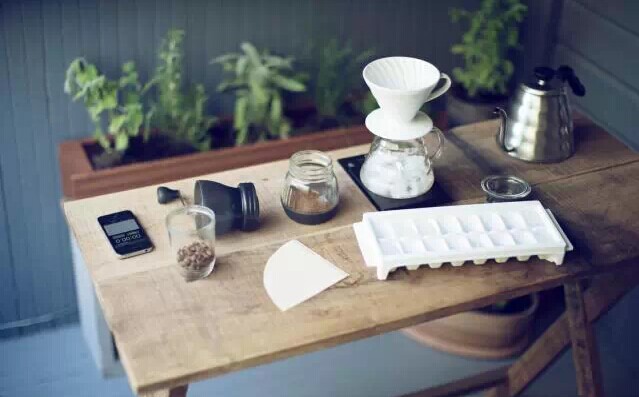
Made: Japanese iced coffee
Materials
30 grams of coffee
250 grams of hot water
250 grams of ice
Your favorite hand flushing equipment (Chemex, Hario V60, Beehouse Dripper, Kalita Wave, etc.)
Coffee containers (mugs, Chemex, glass jars, glass water bottles, etc.)
A piece of filter paper
A scale
A coffee mill
Number one punch the pot (Hario Buono, etc.)
A timer
Method
Put the ice at the bottom of the coffee container you prepared.
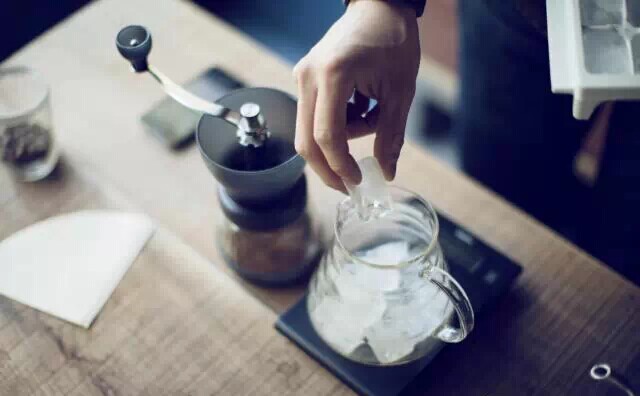
Soak and rinse the filter paper with about 60 grams of hot water and pour out the water.
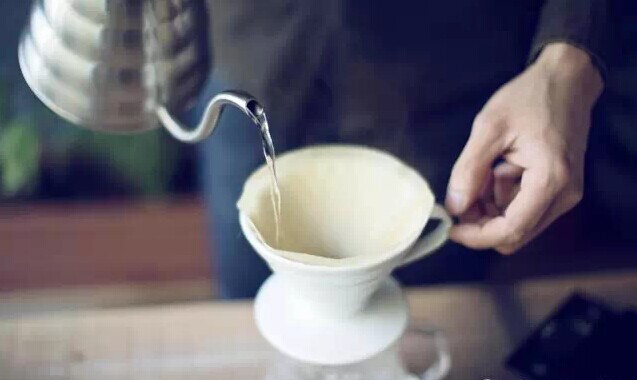
Grind the coffee in medium thickness, which is close to the sand on the beach. The coffee powder produced by an excellent bean grinder is uniform in thickness, without large particles and very fine powder.
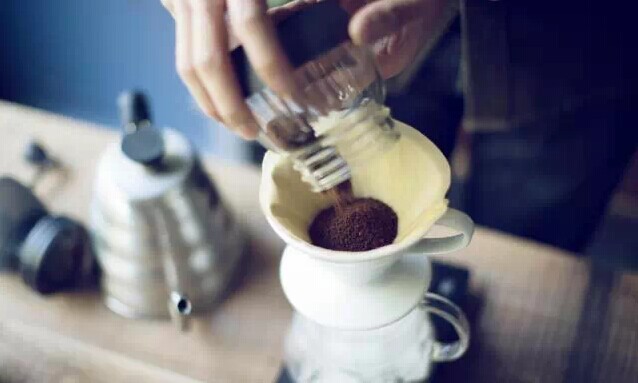
Put the coffee on the moist filter paper, turn on the timer and start pouring fresh hot water into the coffee powder. The method is the same as when making hot coffee by hand: first pour a small amount of hot water on the dry coffee powder, just enough to completely wet the coffee powder, and then wait about 30 seconds. If the coffee is fresh enough, you will see the coffee powder start to bubble and release gas-this is releasing carbon dioxide.
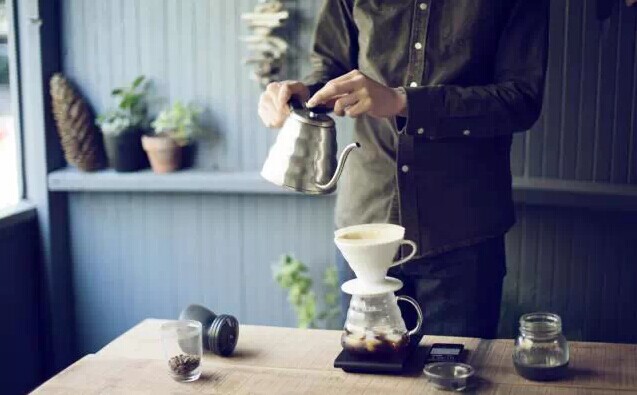
After 30 seconds, continue to inject water. Don't pour all the water at once, you need to finish the extraction of coffee in 3-4 minutes (that is, all the water goes through coffee powder and filter paper), so fill it slowly. Ideally, all 250 grams of water should be injected in about 2 minutes and 30 seconds. You can adjust the ratio of hot water to ice as much as you like-for example, try 2 beat 3 water and 1 pound 3 ice.
Enjoy it!
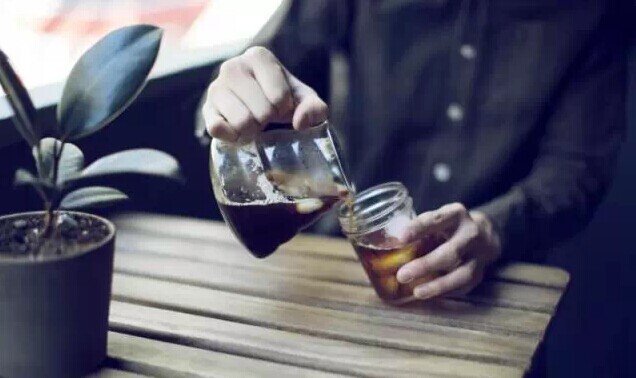
Important Notice :
前街咖啡 FrontStreet Coffee has moved to new addredd:
FrontStreet Coffee Address: 315,Donghua East Road,GuangZhou
Tel:020 38364473
- Prev
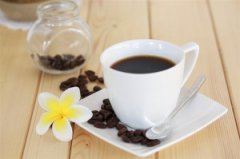
The Prospect of Fine Coffee Baking Market: a clear View of China's Coffee Market
In 2006, we seemed to be flocking to talk about boutique coffee. Online, we get professional coffee information from the outside world in a variety of ways, and enjoy talking about it. Now, those who used to play coffee together, either parents, start a new life journey, or stick to the godfather, walking faster and faster on the road to this boutique coffee.
- Next
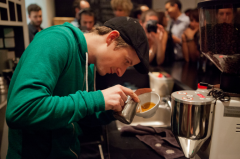
The Barista barista competition advises baristas to watch the game.
Some of the problems I encountered in the competition, as a barista with rich experience in the competition, I spent seven years participating in the USBC to WBC competition and accumulated these experiences. These experiences can be used in many places. As a result, he won 13 top three trophies in 16 competitions, including eight championships. There are a lot of problems in the game, which sometimes take you by surprise.
Related
- Beginners will see the "Coffee pull flower" guide!
- What is the difference between ice blog purified milk and ordinary milk coffee?
- Why is the Philippines the largest producer of crops in Liberia?
- For coffee extraction, should the fine powder be retained?
- How does extracted espresso fill pressed powder? How much strength does it take to press the powder?
- How to make jasmine cold extract coffee? Is the jasmine + latte good?
- Will this little toy really make the coffee taste better? How does Lily Drip affect coffee extraction?
- Will the action of slapping the filter cup also affect coffee extraction?
- What's the difference between powder-to-water ratio and powder-to-liquid ratio?
- What is the Ethiopian local species? What does it have to do with Heirloom native species?

